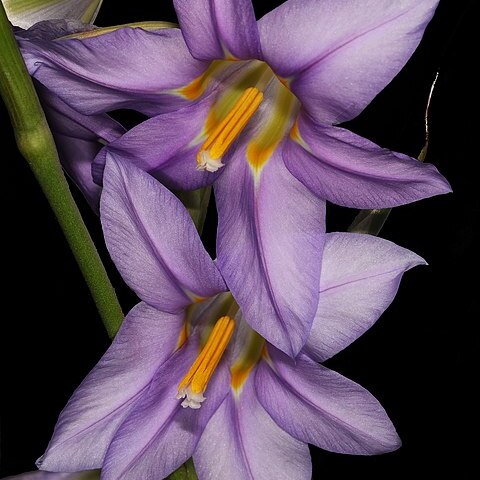Perennial herb, geophyte, 0.40-0.75 m high; corm with dark brown, fibrous tunics. Leaves several, canaliculate, sometimes twisted towards apex. Spathes herbaceous, sometimes becoming membranous above. Inflorescence with pale blue-mauve, ± pendent flowers; nectar guides yellow; tepals subequal, outer 35-45 mm long. Stamens: filaments 10-13 mm long, puberulous below, united in slender cylindrical column; anthers 12-17 mm long, erect, contiguous, appressed to style; pollen yellow. Ovary 8-12 mm long; style divided ± above at apex of anthers, crests lacking. Flowering time May-Sept. Capsule oblong, nodding to pendent, sometimes sparsely papillate.
Cormous geophyte, up to 0.7 m tall, often much branched. Leaves several, channelled, trailing above. Flowers enclosed in green spathes, pale blue with a cream cup, with yellow nectar guides, tepals deeply cupped, spreading above, filaments in a slender column, anthers partly concealing narrow style branches, style crests vestigial. Mostly July-Aug.

